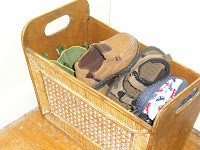Kids who engage in regular physical activity are stronger, more confident, and have a better outlook on life.
Here is a simple guide to helping you little ones get moving and stay healthy.
This is a suggested Activity Chart from Kids Health
Age | Minimum Daily Activity | Comments |
| Infant | No specific requirements | Physical activity should encourage motor development |
| Toddler | 1½ hours | 30 minutes planned physical activity AND 60 minutes unstructured physical activity (free play) |
| Preschooler | 2 hours | 60 minutes planned physical activity AND 60 minutes unstructured physical activity (free play) |
| School Age | 1 hour or more | Break up into bouts of 15 minutes or more |
TEENS
Infants and young children should not be inactive for prolonged periods of time — no more than 1 hour unless they're sleeping. And school-age children should not be inactive for periods longer than 2 hours.
Planned play doesn't have to be gymnastics or little league, though those do qualify. It can be as simple as taking a walk, going for a bike ride, dancing, or playing catch. Free Play is just that where you don't guide a child's imagination, letting them climb, spin, run, play tag, whatever there little hearts (& legs) desire.
Here are a few websites for more information and ideas for helping get your little one in a grove!
Kids Health
Let's Move Iniative
BAM! (Body and Mind) kids health by the CDC
Kids.Gov





